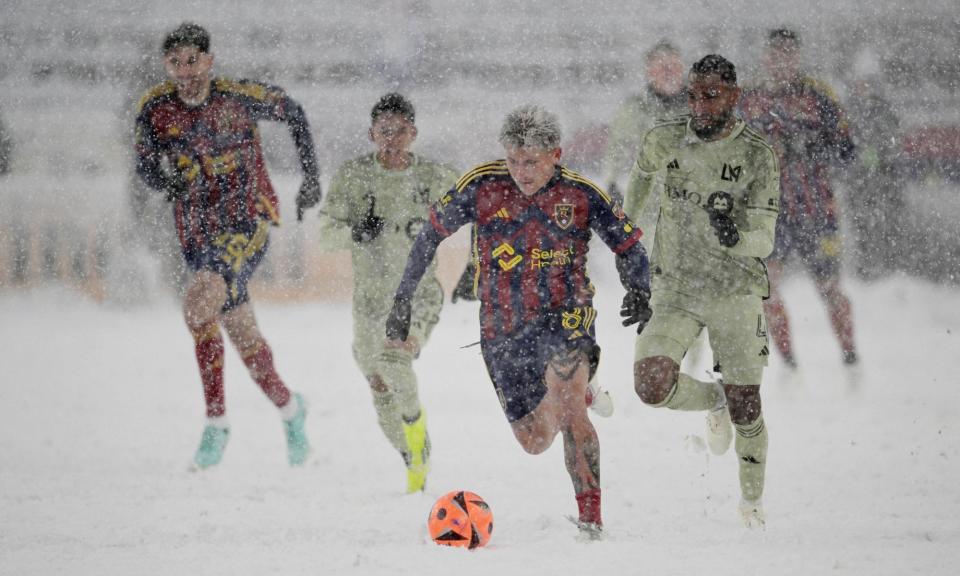If former Tottenham goalkeeper Hugo Lloris had hoped to segue into a sunny semi-retirement after his move to Los Angeles, his debut for LAFC would have felt especially satisfying. The 36-year-old World Cup winner made a club-record seven saves in a victory over the Seattle Sounders beneath the California sun on the opening weekend of the 2024 MLS season.
A week later, however, in his first away match since moving to the US, Lloris experienced a less comfortable time. With his goalkeeper’s gloves acting more as a barrier against frostbite than a shot-stopping aid, he was forced to pluck a fluorescent orange match ball from his net three times in the first half after a sudden snowstorm and near-freezing temperatures descended upon Real Salt Lake’s America First Field.
Several players sported snoods. Eduard Atuesta, LAFC’s Colombian midfielder, wore his pulled up to just beneath his eyes. Kick-off had already been delayed two hours due to high winds. And once the match did finally begin, referee Aleksandar Zhelyazkov ordered the players off the pitch after just four minutes when lightning streaked across the sky above the stadium. A mandatory 30-minute postponement was enacted.
Related: Genial Luis Suárez shows why he’s Inter Miami’s true path to MLS glory
Within five minutes of the teams returning to the field, a blanket of snow covered the grass. Any time play was concentrated on one side of the field, the grounds staff shuttled on, shovels in hand, at the other end in an effort to preserve the visibility of the pitch markings. Zhelyazkov was forced to carve lines into the snow to indicate how far back defenders should stand on free-kicks. By full-time, four inches of snow had fallen.
Due to the sheer expanse of the US and its varying climates, it is a fact of MLS life that a team can play in blazing heat one weekend and subzero cold the next. Extreme winter conditions are already one of the key reasons why the league’s schedule does not line up with many of its European counterparts, instead running February to October to best capture the warmer months.
“We continue to have to manage the largest geographic region for any league in the world, and the most weather changes and time changes of any league in the world,” commissioner Don Garber told ESPN in 2021 when asked why the MLS season is not scheduled to coincide with the major…

